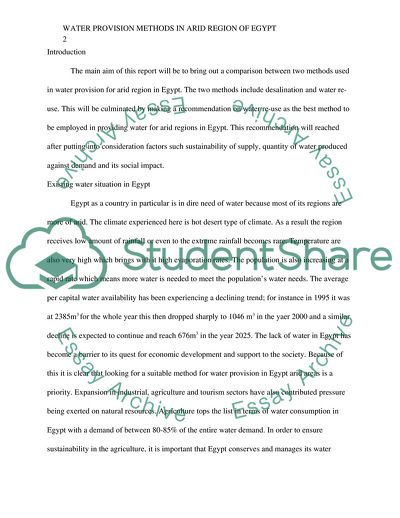Cite this document
(Water Provision Methods in Arid Region of Egypt Term Paper, n.d.)
Water Provision Methods in Arid Region of Egypt Term Paper. Retrieved from https://studentshare.org/environmental-studies/1801044-write-a-recommendation-report-in-which-you-compare-two-possible-method-for-water-provision-in-an-arid-or-semi-arid-region-of-your-choice
Water Provision Methods in Arid Region of Egypt Term Paper. Retrieved from https://studentshare.org/environmental-studies/1801044-write-a-recommendation-report-in-which-you-compare-two-possible-method-for-water-provision-in-an-arid-or-semi-arid-region-of-your-choice
(Water Provision Methods in Arid Region of Egypt Term Paper)
Water Provision Methods in Arid Region of Egypt Term Paper. https://studentshare.org/environmental-studies/1801044-write-a-recommendation-report-in-which-you-compare-two-possible-method-for-water-provision-in-an-arid-or-semi-arid-region-of-your-choice.
Water Provision Methods in Arid Region of Egypt Term Paper. https://studentshare.org/environmental-studies/1801044-write-a-recommendation-report-in-which-you-compare-two-possible-method-for-water-provision-in-an-arid-or-semi-arid-region-of-your-choice.
“Water Provision Methods in Arid Region of Egypt Term Paper”, n.d. https://studentshare.org/environmental-studies/1801044-write-a-recommendation-report-in-which-you-compare-two-possible-method-for-water-provision-in-an-arid-or-semi-arid-region-of-your-choice.


